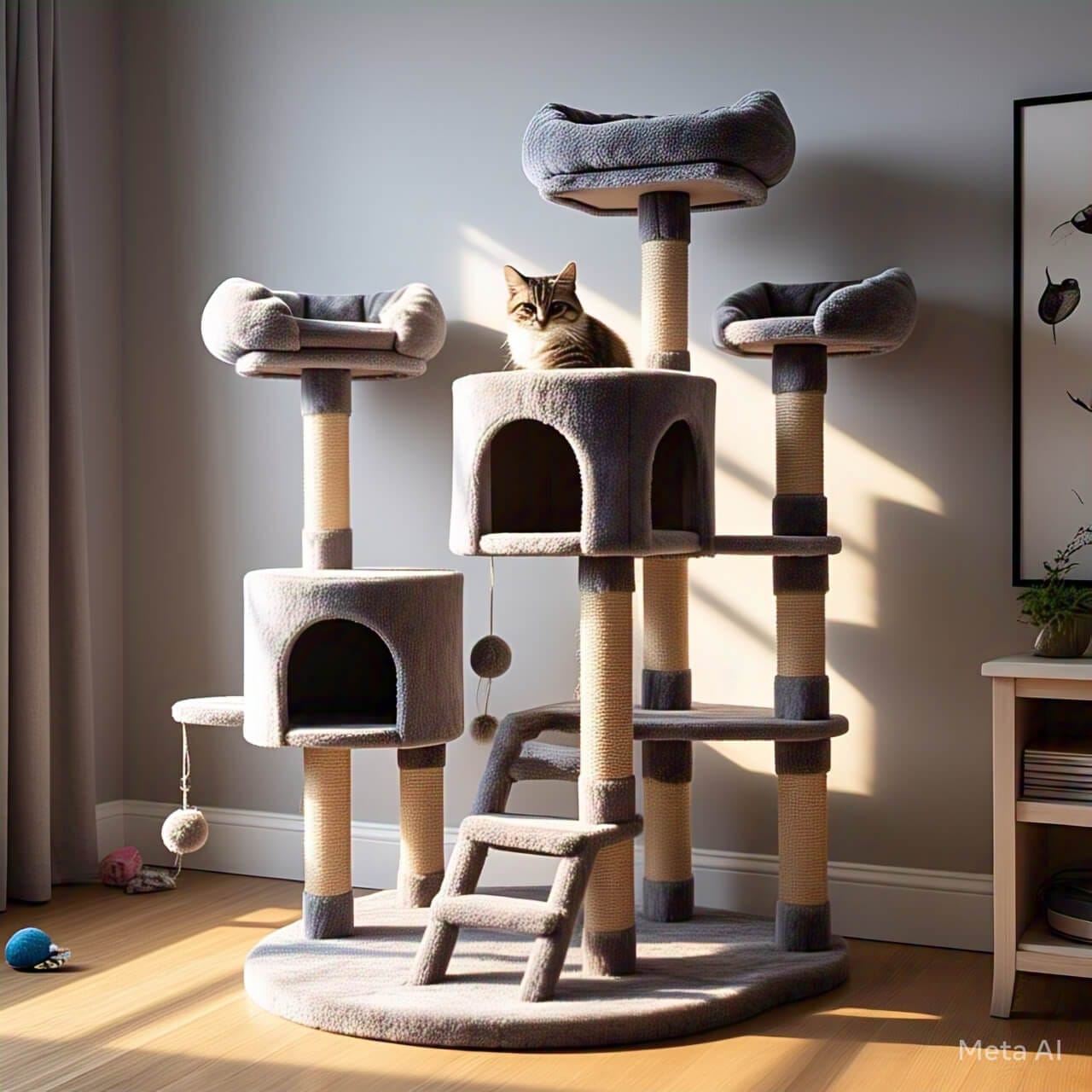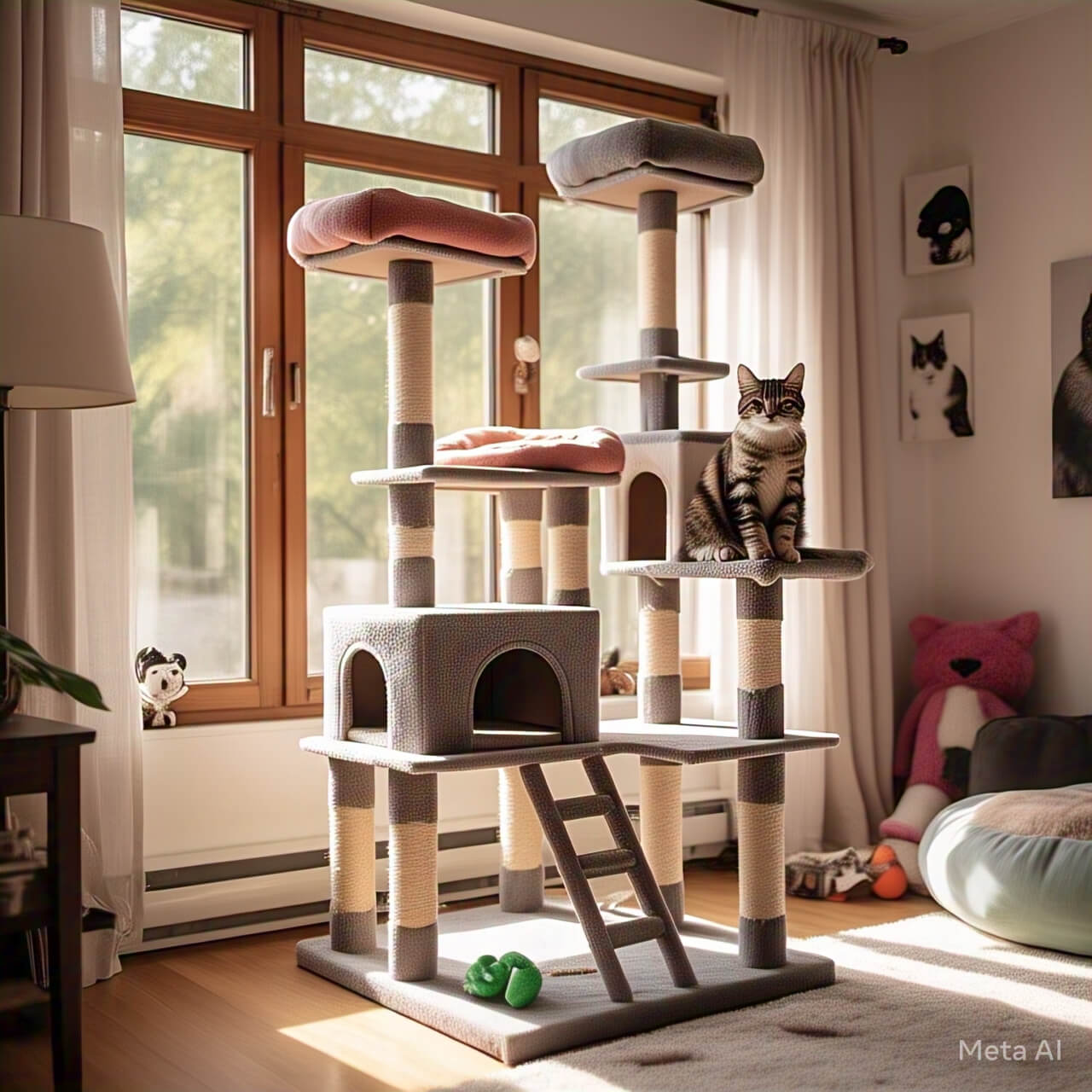How to Build a Cat Tree: Building a cat tree is a fun and rewarding DIY project that gives your feline friend a perfect place to climb, scratch, and relax. A cat tree keeps your cat entertained, saves your furniture from scratches, and adds a personal touch to your home. You don’t need to be an expert—just some basic tools, materials, and creativity. This guide will walk you through the steps to make a sturdy, safe, and exciting cat tree that your pet will love.

10 Easy Tips for Building a Cat Tree
- Choose strong, stable materials.
- Measure twice, cut once.
- Use sisal rope for scratching posts.
- Secure all parts tightly.
- Add soft cushions for comfort.
- Make different levels for climbing.
- Keep it stable to prevent tipping.
- Use non-toxic glue and paint.
- Add hiding spots for privacy.
- Test stability before letting your cat use it.
1. Planning Your Cat Tree Design
Before you start building, plan your design. Think about how tall and wide the cat tree should be. Consider your cat’s habits—does it love to climb, hide, or scratch? Sketch a simple design with platforms, scratching posts, and cozy spots. Make sure the base is wide enough to prevent tipping. A good design keeps your cat safe and happy.
2. Choosing the Right Materials
Use strong, cat-friendly materials. Wood like plywood or MDF works well for platforms. Sisal rope is great for scratching posts. Carpet or soft fabric makes comfy resting areas. Avoid toxic glues or paints. Check that all screws and nails are secure so your cat won’t get hurt.
3. Building a Strong Base
The base keeps the cat tree from falling. Use a thick, heavy wooden board as the bottom. A wider base means more stability. If your tree is tall, add extra weight at the bottom. Test it by pushing lightly—if it wobbles, reinforce it.
4. Adding Scratching Posts
Cats love to scratch, so include scratching posts. Wrap sisal rope tightly around wooden posts and secure it with glue or staples. Place them where your cat can easily reach. This saves your furniture!
5. Creating Platforms and Perches
Cats enjoy high spots. Build multiple levels with wooden platforms covered in carpet. Space them so your cat can jump easily. Round or square shapes both work—just sand the edges smooth.
6. Making Cozy Hideaways
Add a small box or tunnel for hiding. Cats feel safe in enclosed spaces. Use soft fabric inside for comfort. You can attach it to a platform or place it at the bottom.
7. Securing All Parts Safely
Check every screw, nail, and glue joint. Loose parts can be dangerous. Tighten everything and let glue dry fully before letting your cat use the tree.
8. Adding Fun Extras
Make it more exciting with hanging toys, ropes, or tunnels. Cats love interactive elements. Just ensure they’re securely attached.
9. Testing Stability
Before your cat uses it, shake the tree gently. If it moves too much, reinforce weak spots. A stable tree prevents accidents.
10. Letting Your Cat Explore
Once it’s safe, let your cat check it out. Some cats need time to adjust. Encourage them with treats or catnip.

FAQs About Building a Cat Tree
| Question | Answer |
|---|---|
| What wood is best for a cat tree? | Plywood or MDF are strong and safe. |
| How do I stop the cat tree from tipping? | Use a wide, heavy base. |
| Can I use regular carpet? | Yes, but avoid loose fibers. |
| How tall should a cat tree be? | 3-5 feet is good for most cats. |
| How do I clean a cat tree? | Vacuum it and spot-clean with pet-safe cleaner. |
Building a cat tree is easy and fun. Follow these steps, and your cat will have a perfect new playground.









